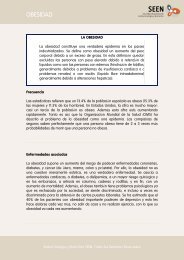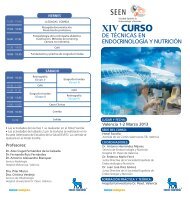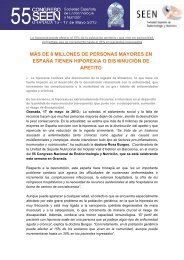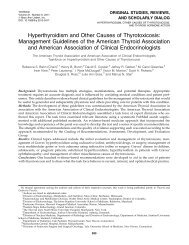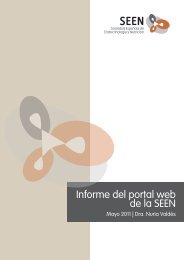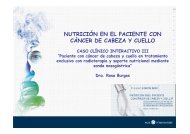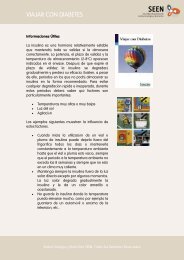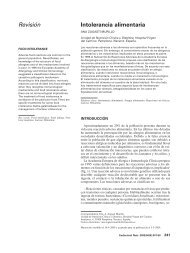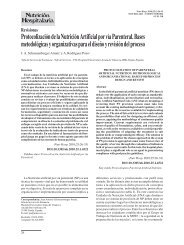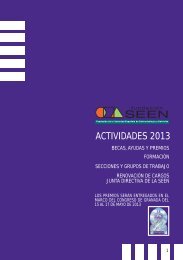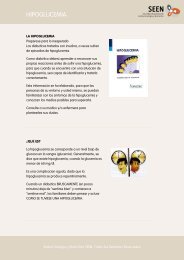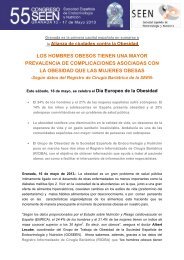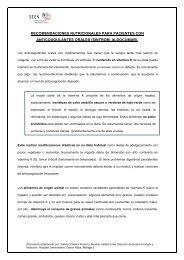Basic Concepts of Fluid and Electrolyte Therapy
Basic Concepts of Fluid and Electrolyte Therapy
Basic Concepts of Fluid and Electrolyte Therapy
Create successful ePaper yourself
Turn your PDF publications into a flip-book with our unique Google optimized e-Paper software.
Any patient who meets the criteria for AKI should have a thorough<br />
clinical evaluation, which includes an assessment <strong>of</strong> volume status,<br />
fluid balance <strong>and</strong> medication chart in order to identify any potential<br />
causes for the AKI. In the majority <strong>of</strong> cases, AKI may be reversible if<br />
the cause is identified <strong>and</strong> appropriate management implemented.<br />
Aetiology <strong>of</strong> Acute Kidney Injury<br />
If the criteria for diagnosing AKI have been satisfied, it is important to<br />
identify its underlying aetiology as this will determine the most<br />
appropriate therapy <strong>and</strong> influence whether early referral to nephro -<br />
logy is necessary. AKI can be considered as pre-renal, intrinsic <strong>and</strong><br />
post-renal (Fig. 10). Pre-renal <strong>and</strong> post-renal can both be considered<br />
as functional processes that may progress to damage to the<br />
parenchyma if not treated promptly.<br />
Figure 10: Classification <strong>of</strong> AKI<br />
ACUTE KIDNEY INJURY<br />
PRERENAL (functional) INTRINSIC (damage) POSTRENAL (functional)<br />
ACUTE TUBULAR<br />
INJURY<br />
INTERSTITIAL<br />
NEPHRITIS<br />
(10%)<br />
ACUTE<br />
GLOMERULONEPHRITIS<br />
(5%)<br />
ISCHAEMIA/SEPSIS<br />
TOXINS<br />
81




